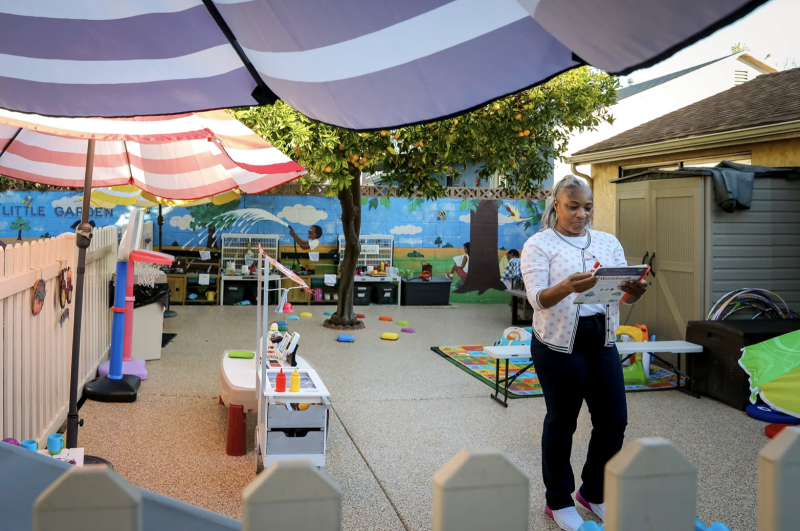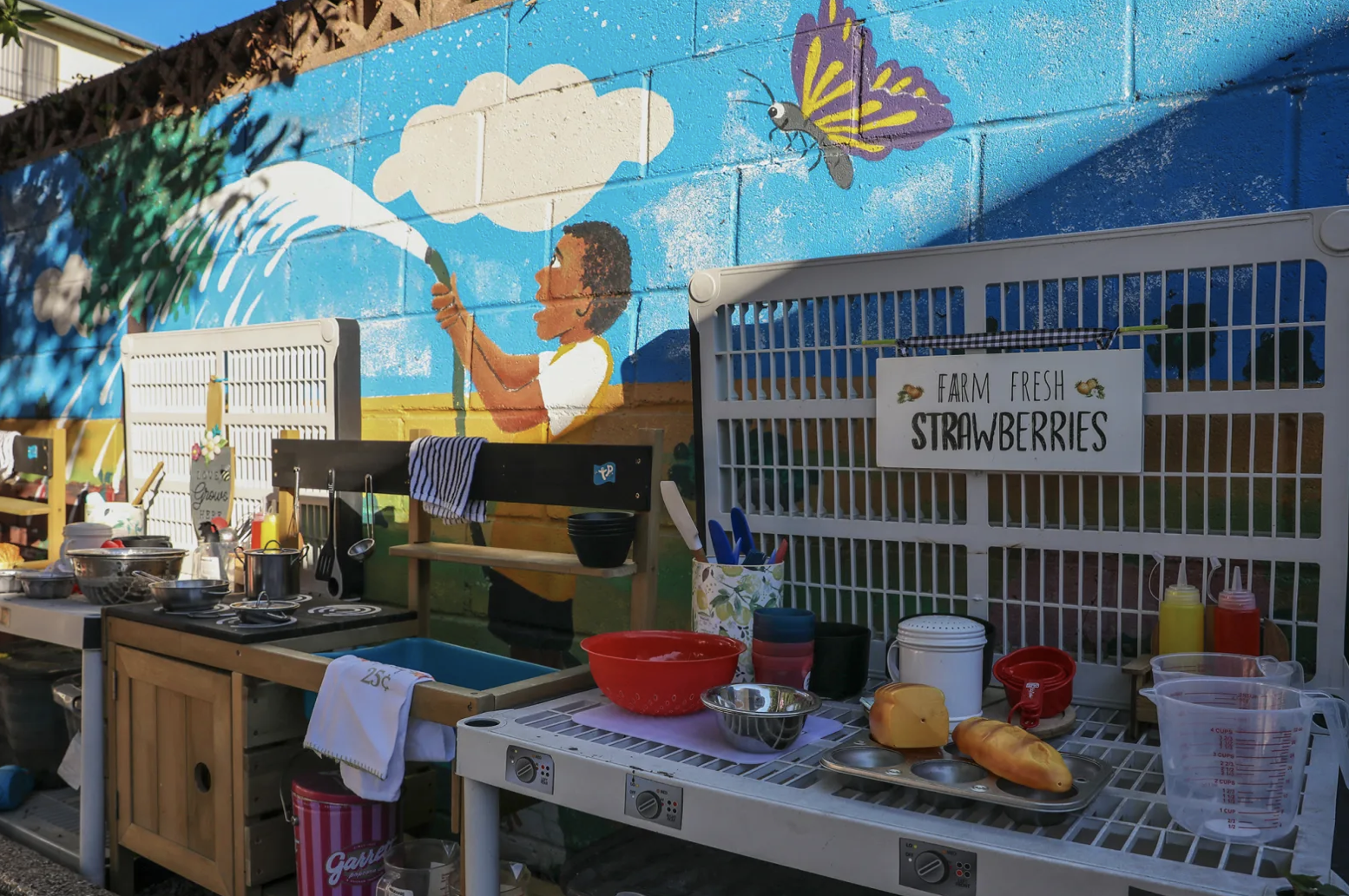For Tonya Muhammad, who runs the Lil Critters family day care in Hawthorne, spring of 2020 was, in a word, “horrible.” The early rush on cleaning supplies meant that she and her husband had to criss-cross Los Angeles to find disinfectant, sourcing bottles of Lysol from a dental supply company and aloe vera from a local nursery to make homemade hand sanitizer.
But that wasn’t the worst of it. Muhammad’s assistant left, fearing for the health of her grandmother, whom she lived with. That was in March of 2020, and Muhammad hasn’t been able to find a replacement since, despite posting the job on Indeed and Facebook Jobs and at a nearby community college.
“I’ve even paid for fingerprints for a couple [of applicants] and then there’s just no follow-up,” said Muhammad.
Without the watchful eyes of a second adult, she’s had to reduce the number of kids she looks after from 14 to 6, and has gone from being a 24-hour day care to operating from 6 a.m. to 5:30 p.m. She estimates that her income from the day care has fallen by more than half.
California lost about 27,800 child care workers between February and April of 2020 — or roughly a third of its workforce — according to data from the Bureau of Labor Statistics. From then through September of 2021, about 19,600 have come back. Still, the workforce is about 10% smaller than it was prepandemic.
Even before the pandemic, however, there wasn’t enough child care available in California to meet families’ needs. Labor issues that long bubbled below the surface are now driving acute staffing shortages: low pay, long hours and limited benefits. That makes it hard to earn a living in an industry that supports the rest of the economy.
Child care providers find themselves stretching across a gap between what parents are able to afford and the wages they need to offer to attract and retain staff.
The state of California plays a role here: It reimburses some child care providers who care for lower- and moderate-income families, at rates advocates argue have long been too low. In June, a new union representing home child care providers who work with families receiving state subsidies won workers a 15% raise from the state.
Still, most Californian child care is provided through the private market. And that system has failed miserably, says Elena Montoya, a senior research and policy associate at UC Berkeley’s Center for the Study of Child Care Employment.
“The current [labor] shortage is a result of placing the burden of paying for child care on parents, rather than acknowledging that child care is a public good,” she said.
A pandemic was the last thing child care providers needed. Day care centers weren’t sure what the COVID-19 rules would be for them and were struggling to secure protective gear, said Cecilia Rojas, resource and referral manager at Crystal Stairs, a Los Angeles-based organization that helps families find child care. Some child care workers quit to take care of their own school-aged children, who were suddenly stuck at home. Others left because they were worried about being exposed to the virus. Parents pulled their kids out of day care, leading to budget shortfalls and closures.
Federal and state relief funds did help keep child care facilities open. A survey of early childhood educators conducted by the National Association for the Education of Young Children in early summer found that nearly half of the 1,200 respondents in California said they would have had to close were it not for the aid.
But the federal funds, said Montoya, “as important and terrific as they are, they really are a short-term stopgap to avoid the total collapse of the system.”
California made a large investment in transitional kindergarten in July, committing $2.7 billion to expand free transitional kindergarten to all 4-year-olds across the state by the school year that starts in 2025. Proponents consider that a game changer; some child care operators fear it could undercut their business model as they lose 4-year-olds whose tuition helps cover the higher cost of caring for infants.

